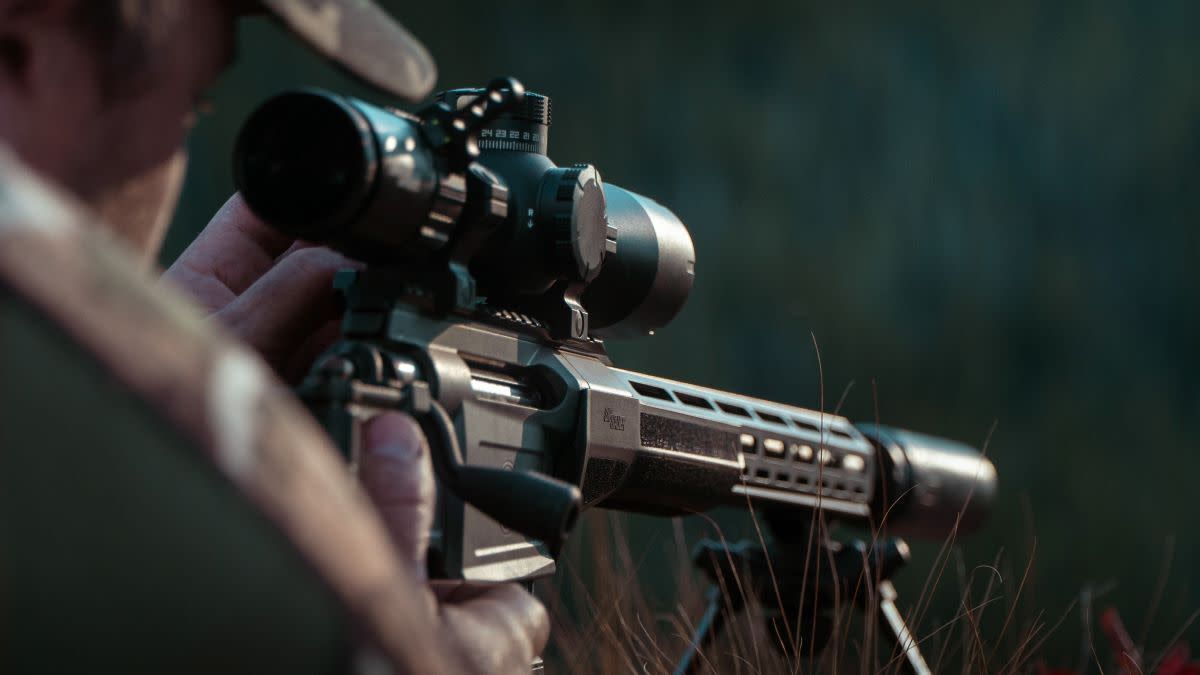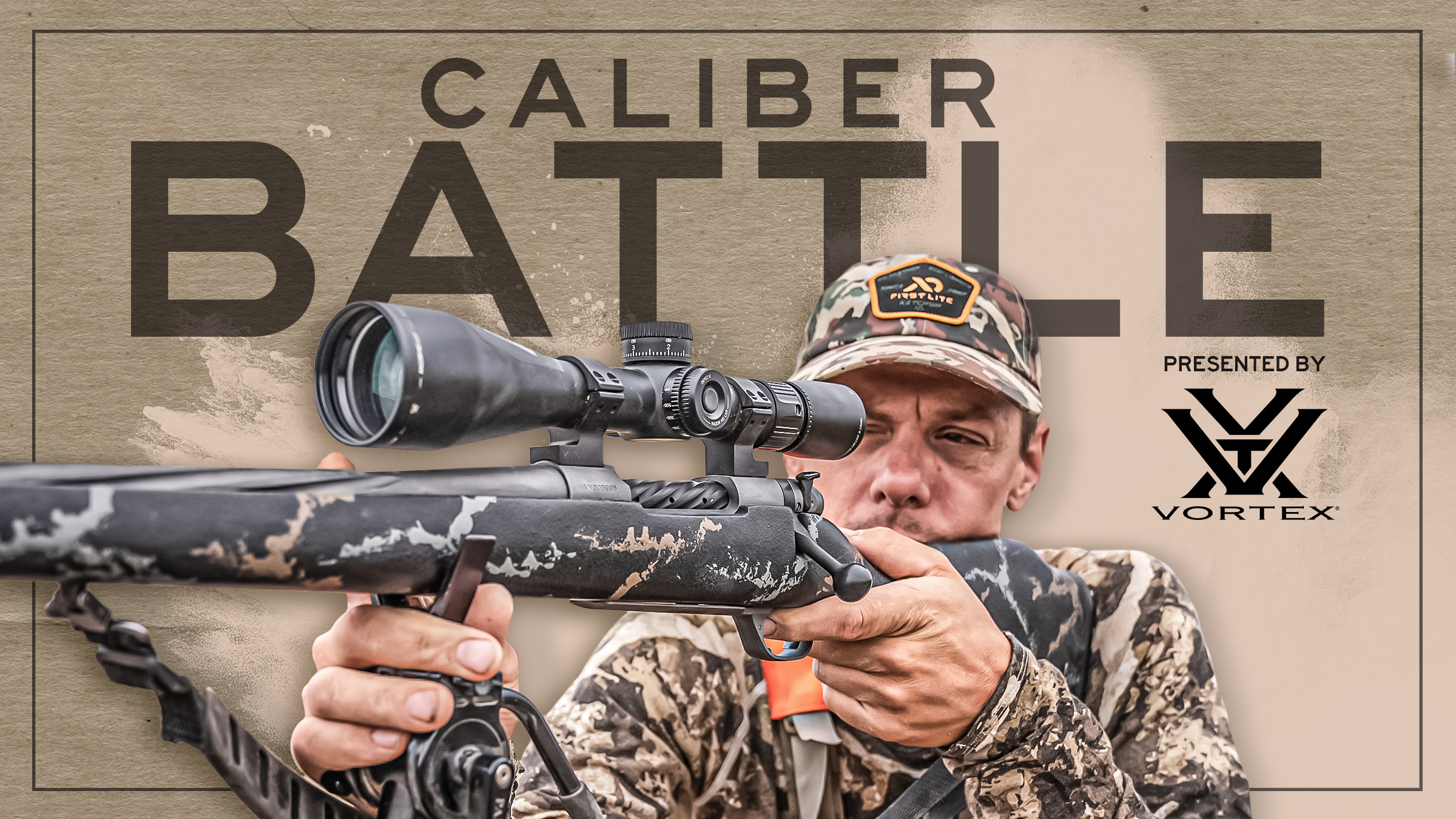
Billed as the most powerful 7mm cartridge on the market, the .28 Nosler made quite a splash when it hit gun stores in 2015. Nosler promised that its new offering would modernize the 7mm category by taking advantage of all the latest and greatest in firearm and bullet technology, and now several other ammo makers offer the company’s hottest cartridge.
But as 6.5 Creedmoor haters are so fond of pointing out, “newer” doesn’t always mean “better.” Old cartridges can also be loaded with modern bullets and powders, and there are plenty of tried-and-true 7mm cartridges to choose from.
The 7mm Remington Ultra Mag is probably a closer comparison to the .28 Nosler, but we wanted to pit it against a more popular offering: the classic 7mm Remington Magnum. Thousands of hunters already own a 7mm Rem. Mag. For those folks, does the .28 Nosler offer enough advantages to make the upgrade? Read on to find out.

Ballistics
Nosler wasn’t lying when it claimed to have developed the most powerful 7mm cartridge. The .28 can push a 150-grain bullet 3,250 feet-per-second (fps) at the muzzle and a 175-grain bullet 3,125 fps. Those two bullets produce 3,530 foot-pounds (ft.-lbs.) and 3,794 ft.-lbs. of energy, respectively.
The 7mm Rem. Mag. ain’t no slowpoke, but it can’t compete with the Nosler’s greater case capacity. Sig Sauer’s Venari Soft Point 7mm Rem. Mag. fires a 154-grain bullet 3,045 fps at the muzzle for an energy output of 3,170 ft.-lbs. Sig’s Elite Hunter line can fire a 160-grain AccuBond bullet 2,950 fps to produce 3,091 ft.-lbs. of energy, and Federal’s PowerShok 175-grain bullets leave the muzzle at 2,860 fps for 3,178 ft.-lbs. of energy.
If your eyes started to glaze over reading all those numbers, here’s the bottom line: the .28 Nosler produces 5-10% more velocity than the 7mm Rem. Mag., which results in 15-20% more energy at the muzzle. Those numbers won’t describe every individual load comparison, but they’re an accurate generalization.
A fast bullet comes with both advantages and disadvantages. In the former category, the Nosler’s greater velocity means it will drop less and be less affected by the wind. The 150-grain Nosler Expansion Tip bullets drop 8.7 inches at 300 yards and 37 inches at 500 yards with a 100-yard zero. Sig’s Venari 154-grain 7mm Rem. Mag., by contrast, drops about 10 inches at 300 yards and 46 inches at 500 yards. A higher-BC 150-grain bullet will drop a few inches less at 500 yards, but most apples-to-apples trajectory comparisons will put the Nosler on top.
One disadvantage of magnum cartridges is that they tend to wear out barrels faster than their more moderate counterparts. The 7mm Rem. Mag. is famously hard on barrels, and that’s even more true of the .28 Nosler. Of course, barrel life depends a lot on barrel quality, and if you’re careful not to run a .28 Nosler barrel too hot, it will almost certainly take several hundred rounds before you start seeing wear. If this is a hunting rig you only shoot a few dozen times a year, it’ll likely last longer than you.
Winner: .28 Nosler
Shootability
“Shootability” refers to all aspects of a cartridge’s potential for extended use at the range and in the field: recoil impulse along with cartridge and rifle cost and availability.
It stands to reason that the more powerful .28 Nosler produces more recoil, and most sources back up this commonsense assumption. Recoil depends on the load and rifle used, but generally speaking, the .28 Nosler hits with about 28 ft.-lbs. of recoil energy while the 7mm Rem. Mag. hovers right around 20 ft.-lbs. This is a fairly significant difference given the Nosler’s 5-10% velocity advantage.
For comparison, that means the Nosler will feel like a hot .300 Win. Mag. while the 7mm Rem. Mag. is more akin to a .30-06 Springfield. Both are pushing into the discomfort range for even experienced hunters, and you’d be smart to use a muzzle brake or suppressor with the Nosler.
The 7mm Rem. Mag. is an even clearer winner when it comes to ammo and rifle cost and availability. Sig Sauer doesn’t produce the .28 Nosler, and Federal only has one offering on tap. Hornady and Browning produce one or two loads, but the bulk of the .28 Nosler on the market comes from its namesake company.
The 7mm, on the other hand, can be had from every major ammo manufacturer. And while you’ll spend at least $3 per round for the .28 Nosler (usually more like $4), you can get high-quality 7mm Rem. Mag. hunting ammo for only about $2 per round. If you’re looking to get in some target practice, you can find plinking ammo online for as little as $1.50 per round.
Ammo availability always mirrors rifle availability. Both cartridges are almost exclusively chambered in bolt-action rifles, but the 7mm Rem. Mag. is far more widely available. It’s available from most rifle manufacturers and at most sporting goods stores, but the .28 Nosler will be tougher to track down. Savage, Nosler, Browning, Bergara, and Christensen Arms all chamber rifles in .28 Nosler, but beyond that, you’re looking at smaller outfits like Seekins Precision. Those Nosler chambered rifles also tend to be higher-end, so you’ll pay more than for a rifle chambered in 7mm Rem. Mag.
Winner: 7mm Rem. Mag.
Versatility
Versatility is largely correlated to the range of bullet weights that can be loaded in a particular cartridge. The greater the range, the more species of game animals that can be targeted.
If you limit yourself to factory options, the 7mm Rem. Mag. is the winner. Midway USA lists 7mm options between 127 and 180 grains and .28 Nosler options between 139 and 185 grains. However, within those ranges, the 7mm can be had with a far wider array of bullet styles and weights geared toward different hunts.
Reloading allows the .28 Nosler to be fitted with bullets as light as 120 grains and as heavy as 195 grains, which gives it virtually the same versatility as the 7mm.
If we define “versatility” in terms of hunting scenario, the Nosler’s superior ballistics allows for slightly longer-range shots and less-than-ideal shot placement. The 7mm is still one of the best long-range hunting cartridges on the market, but it doesn’t move quite as fast as the Nosler.
Bottom line? Both cartridges can take any North American big game animal, but I like the 7mm’s broader range of factory options. That’s more a function of the cartridge’s popularity than any inherent weakness of the .28 Nosler design, but that would be my recommendation to anyone trying to decide between the two.
Winner: 7mm Rem. Mag.
And the Winner Is…
In his famous reference book “Cartridges of the World,” Frank C. Barnes advises readers against rushing out and purchasing the then-relatively-new 7mm Rem. Mag. “Don’t trade off your present 7mm Magnum with the idea that the Remington round is going to provide some mysterious extra margin of power or knockdown,” he writes.
I think the same could be said of the .28 Nosler. For those who want to squeeze as much power and velocity as possible out of a 7mm cartridge, the Nosler is the way to go. But don’t feel like you need to upgrade your 7mm Rem. Mag. to be successful. The older 7mm has enough power to get the job done on any medium- or big-game hunt, and it’ll be cheaper and easier to find ammo (not to mention a little easier on your shoulder).
For those reasons, I’m giving this one to the 7mm Rem. Mag.
Winner: 7mm Rem. Mag.




Conversation